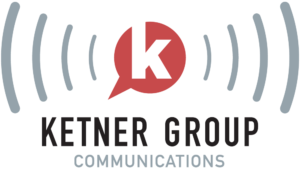
Answer: Because he knew the art of effective communication, and at its heart is storytelling.
Anyone could have stood in front of a bunch of people and said words. “Thank you to this person, thank you to that person, I’m so honored, etc.” I’m usually looking at their dress or tux—or worse—scrolling around on my iPad looking at Ellen DeGeneres’ Twitter feed, completely having zoned out around second 35. Now I loved Cate Blanchett’s acceptance speech and I thought Lupita Nyong’o was gracious and presented well beyond her years, but McConaughey’s speech had me hooked from the first second to the last. It probably helped that he was allowed around three minutes for his acceptance speech; however, this speech had the basic elements of storytelling:
- A personal and interesting hook
- A story to which everyone can relate
- A beginning, middle and end
- A hero (even if it was his “future self”)
I’ve read mixed opinions on the reception and resonance of his speech that night. The audience clearly loved it. Immediate reports gave his speech high praise, even if it was a little odd that he “thanked himself”—which I think is a misunderstanding and exaggeration. Later, a few critics began to emerge and were, in my opinion, overly harsh, inappropriately critical regarding his opening and too narrowly focused on his quirky movements. However, if we analyze the components of his acceptance speech, we’ll find that it was well organized, genuine and highly entertaining.
A personal and interesting hook
Before even making it to the stage, McConaughey shared a loving and intimate kiss with his wife—earning instant brownie points. He opened his speech with the appropriate thank you’s, although notably (and hopefully unintentionally) missing the opportunity to honor the people on which this movie was based, and then set up his story.
“There’s a few things, about three things to my count, that I need each day. One of them is something to look up to, another is something to look forward to, and another is someone to chase.”
Now I’m curious!
A story to which everyone can relate

His acceptance speech was very family-oriented, and what is more relatable to a majority of the night’s viewership than loving your family? He said his family was the center of what he looked forward to each day, and in talking about this, he shared an endearing story about his father.
“To my father, I know he’s up there right now with a big pot of gumbo. He’s got a lemon meringue pie over there. He’s probably in his underwear, and he’s got a cold can of Miller Lite and he’s dancing right now. To you dad, you taught me what it means to be a man.”
During this, he mimed the pot of gumbo, pointed to the invisible pie and gave us a little dance, which was extremely entertaining.
A beginning, middle and end
I’ll point again to the story set up he delivered in the beginning of this speech. He let us know there were three things he needed each day, and he delivered stories for each point. As he wrapped up his speech, he reminded us of the story he told—a conclusion to hit the nail on its head.
“So, to any of us, whatever those things are, whatever it is we look up to, whatever it is we look forward to, and whoever it is we’re chasing.”
To those who thought his speech was scattered—you couldn’t be more wrong. This was a well-thought-out story, and his organized beginning, middle and end proves it.
A hero
Yes, he’s received some criticism for “thanking himself” during his Oscar speech, however, I don’t believe that was the point of his story.
“And to my hero, that’s who I chase. Now, when I was 15 years old, I had a very important person in my life come to me and say, “Who’s your hero?” And I said, “I don’t know, I’ve got to think about that. Give me a couple of weeks.” I come back two weeks later; this person comes up and says, “Who’s your hero?” I said, “I thought about it. It’s me in 10 years.” So I turned 25. Ten years later, that same person comes to me and says, “So, are you a hero?” And I was like, “Not even close! No, no, no!” She said, “Why?” I said, “Because my hero’s me at 35.”
So you see every day, every week, every month, and every year of my life, my hero’s always ten years away. I’m never going to be my hero. I’m not going to attain that. I know I’m not. And that’s just fine with me, because that keeps me with somebody to keep on chasing.”
I believe this is McConaughey’s poetic way of saying that he’s trying to be the best he can possibly be. Many artists are perfectionists seeking a level of satisfaction that they’ll never receive from themselves, and to his point, it gives them something to aspire to with every performance. Can he best himself? Since he, like most artists, is his biggest critic, he admits that he will never be satisfied with the best version of himself.
And he’s okay with that. Alright, alright, alright?
What did you think of his speech? What was your favorite acceptance speech or moment of the night?

















